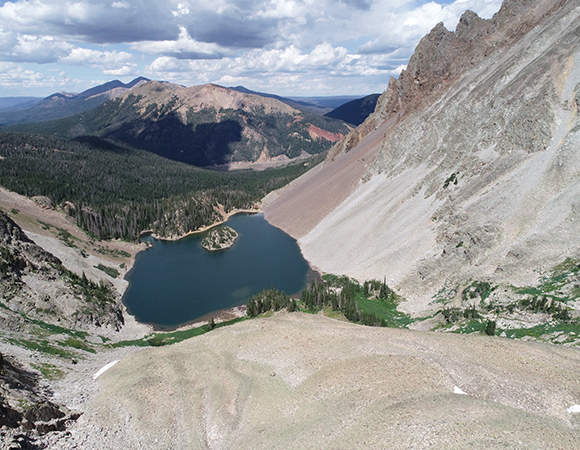
View looking down the rock glacier. Can you find the group doing the TLS survey? (Photo/Keith Williams, UNAVCO, from the UAS platform) 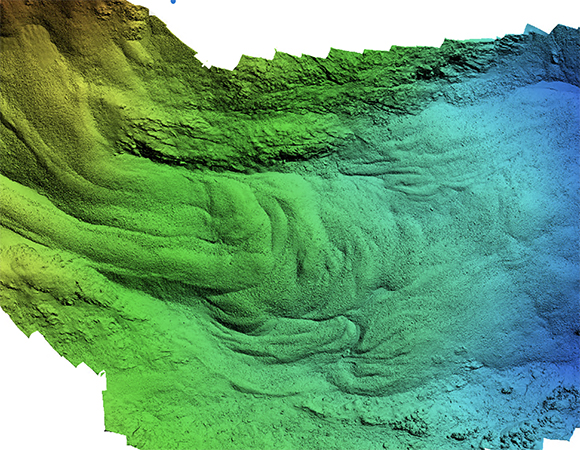
Digital elevation model of the full rock glacier as collected by the UAS. (Image/Keith Williams, UNAVCO) 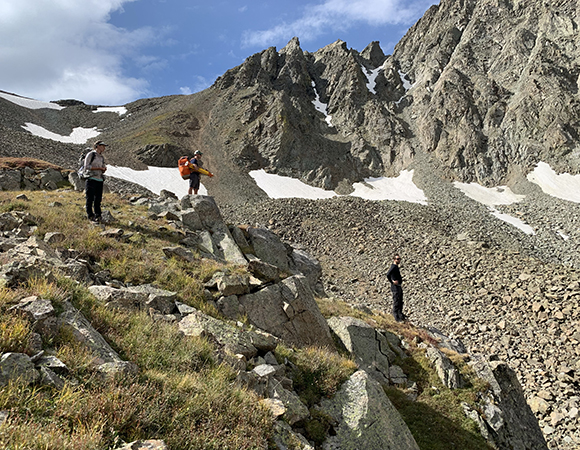
PI Dan McGrath, Bri Rick, and Spencer Niebuhr look out over the rock glacier deciding where to set up the TLS for best coverage. (Photo/Keith Williams, UNAVCO) 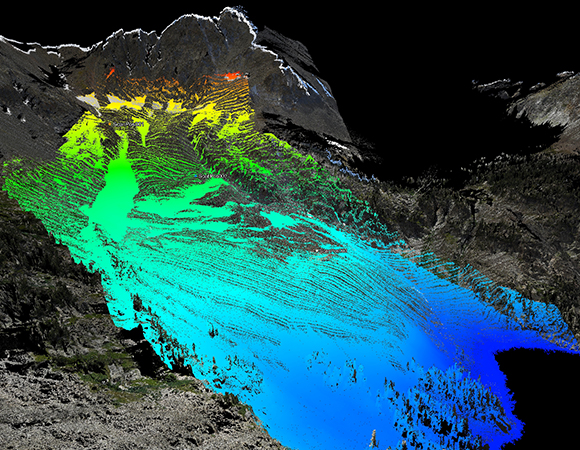
TLS point cloud with the UAS SfM point cloud (colored by elevation) overlaid. (Image/Keith Williams, UNAVCO) 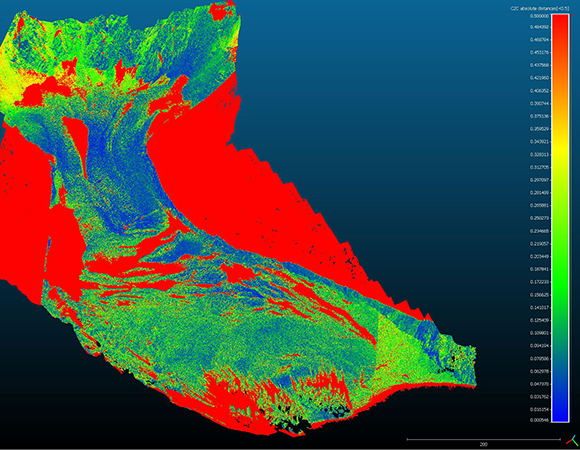
Comparison of TLS and UAS survey results. Red indicates areas with no overlap between the point clouds. (Image/Keith Williams, UNAVCO)
Project Overview
The Lake Agnes rock glacier dominates the Lake Agnes cirque, near Cameron Pass in northern Colorado, however, little is known about its kinematics or dynamics. To determine the motion of the rock glacier, UNAVCO supported Colorado State University researchers with two sets of tools that were used simultaneously: terrestrial laser scanning (TLS) and an uncrewed aircraft system (UAS). The UAS was used to take sets of overlapping photos to be used for structure from motion (SfM) photogrammetry. For this first survey, TLS was used as the primary instrument with UAS SfM filling in the gaps. These gaps are the result of surveying from a ground-based platform, which is unable to image over the undulations of, and down into, the deepest depressions of the rock glacier.
Using these two methods simultaneously also allowed for a comparison. Initial analysis indicates that the accuracy of the UAS SfM could be very similar to the accuracy of the TLS, with many additional benefits. These benefits include:
- Nearly 100% coverage of the glacier (UAS) vs 60-70% (TLS)
- Imaging is always near nadir (vertical) looking at the glacier surface (UAS) vs oblique and from limited scan positions (TLS)
- Surface colors are true and accurate (UAS) vs overlaid and subject to misalignment (TLS)
- ~20 lbs of gear that needed to be hiked in (UAS) vs ~150 lbs (TLS)
- Survey time of ~30 minutes (UAS) vs ~6 hours (TLS)
So, how fast is the rock glacier moving? We can’t yet answer that question, as all we have is a very detailed model from a single, initial observation; later this year we will repeat this collection, which will allow a 3D calculation of velocities between the two datasets. Stay tuned!
Project Information
- Principal Investigator(s): Daniel McGrath, Colorado State University
- UNAVCO Staff: Spencer Niebuhr and Keith Williams
- Dates: Aug 30, 2019
- Location: Lake Agnes Rock Glacier near Cameron Pass, northern Colorado
- Funding Source: University funds
- Map of Lake Agnes, Colorado
Related Links
Written by:
- Keith Williams
- Posted: 14 January 2020
- Last updated: 4 June 2021
- Tags: project highlights, TLS, UAS


